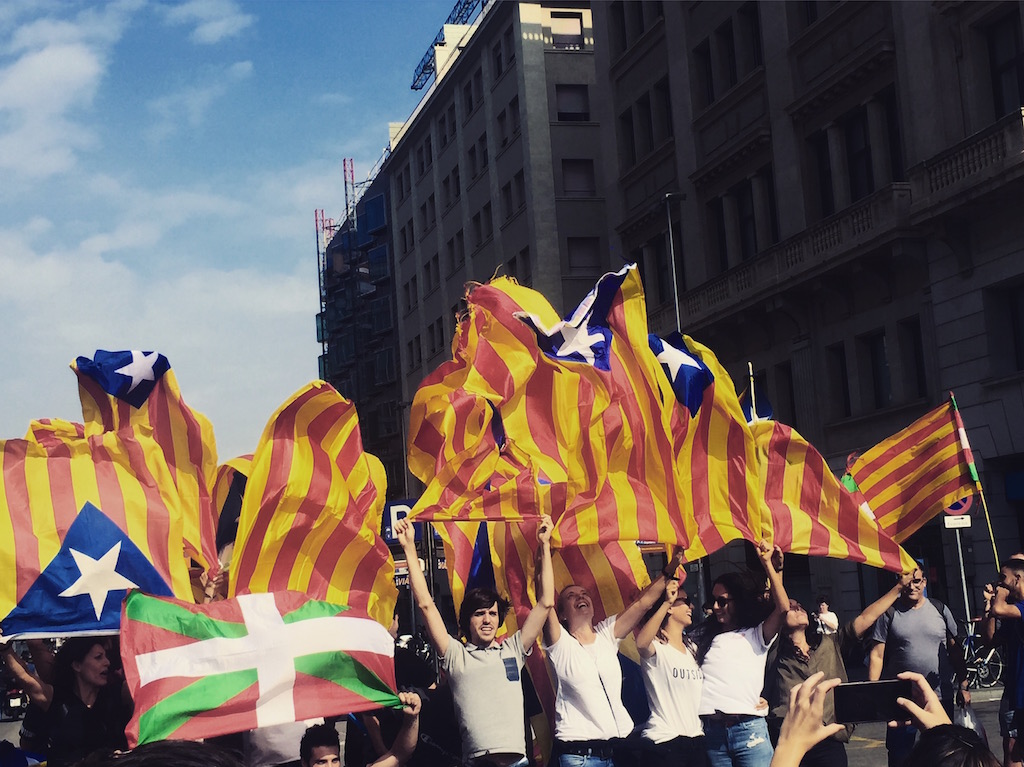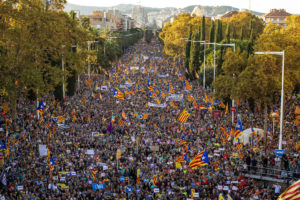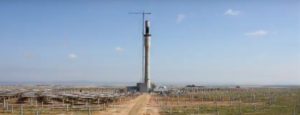Inside the Catalonian Marches for Independence
The issue for many Catalans is no longer just about economics. It's about a perceived bias and freedom of expression. Demonstrators in Barcelona's University Square on Tuesday wave the Senyera estelada---or "starred flag," the unofficial symbol of Catalan independence---to express their support.
(Donald Kaufman / Truthdig)
Demonstrators in Barcelona's University Square on Tuesday wave the Senyera estelada---or "starred flag," the unofficial symbol of Catalan independence---to express their support.
(Donald Kaufman / Truthdig)
 Photo Essay
Inside the Catalan Strike
Photo Essay
Inside the Catalan Strike
 Photo Essay
Inside the Catalan Strike
Photo Essay
Inside the Catalan Strike
View Donald Kaufman’s photos of the mass strike in Barcelona.
BARCELONA, Spain—Thousands of mostly young people gathered Tuesday to rally for their right to express themselves, march against police brutality and protest the bias they perceive from the rest of Spain.
“No violence. Dialogue. That’s what we want,” said Emma, a 40-year-old saleswoman. “We don’t like violence. We want to vote. We want to express our opinion. But in a proper way, with dialogue.”
So why did Sunday’s independence referendum turn violent? Lola Ache, 20, a leader of the Polytechnic University of Catalonia student union, believes the violence had a specific motive. “I think the purpose of this violence is to radicalize the movement, which is a very peaceful movement right now. They want to label us as terrorists. … They compared this [peaceful protests] to the Nazi rallies.”
Not long ago, Catalonia was split on whether to separate from Spain. Polls three months ago showed that 49.4 percent of Catalans were against independence, while 41.1 percent were in favor. Seventy percent agreed on having the right to vote in a referendum.
Ache explained that a fundamental issue separatists face is garnering support from the working class. According to her, many in Catalonia’s working class see the campaign for independence as a movement of the bourgeoisie. They think that the students and younger generation don’t understand what will happen to the poor if Catalonia becomes independent.
“They (the Spanish government and mainstream press) say that if you [Catalonia] leave, this is what’s going to happen to you: You are not going to be in [the] European Union, most of the companies will leave you and come to Madrid,” Ferran Adria, a 33-year-old working-class salesman, said. “All the arguments that they use is what’s going to happen, or how bad things are going to happen if you try to leave.”
“Spanish press is the manipulator” was chanted throughout the rallies of the week. “The problem is that the people in Madrid open the TV, and they only see bad things about Catalans,” said Sia Trawally, a 20-year-old student who champions independence.
The refusal of Spanish President Mariano Rajoy Brey and King Felipe VI to condemn police violence and instead lay the blame on Catalan politicians has put a larger issue at the forefront of the debate: bias against Catalans. Although Catalans are divided on the economics of independence, almost all agree that Spaniards’ bias against them is widespread.
Monica, 16, joined the rally because “they don’t like us, and I don’t feel Spanish. We are not Spanish. … I was at a restaurant (in Madrid), and I talked to a waiter, and he said, ‘Where are you from?’ I said, ‘I am from Catalonia’ and he said, ‘You don’t seem Catalan. Catalans are bad people.’ “
“If you speak Catalan in Madrid, the people say, ‘Oh, my God, you’re speaking Catalan, get out of here, get out of here,’ ” said Bruna Solans, 20, a student. She said an old man harassed her for wearing a Catalonia independence flag and told her that “the Catalan people are killing Spanish people.”
A pro-independent Catalonia website lists 45 examples of Spain “persecuting Catalan language” in the last 10 years. Some of the examples offer little proof. Nevertheless, they exemplify a common sentiment.
The issue for many Catalans is no longer just about economics. It’s about perceived bias and freedom of expression.
View Donald Kaufman’s photos of the mass strike in Barcelona.
Your support matters…Independent journalism is under threat and overshadowed by heavily funded mainstream media.
You can help level the playing field. Become a member.
Your tax-deductible contribution keeps us digging beneath the headlines to give you thought-provoking, investigative reporting and analysis that unearths what's really happening- without compromise.
Give today to support our courageous, independent journalists.



You need to be a supporter to comment.
There are currently no responses to this article.
Be the first to respond.